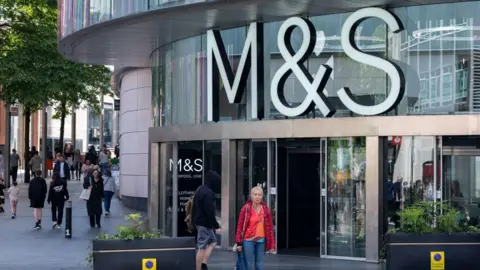In the wake of a significant cyber attack on Marks & Spencer (M&S), the retail giant is facing challenges similar to those encountered by other organizations that have suffered such breaches. The lessons drawn from these incidents can provide dire insights into the implications of hacking, particularly as businesses continue to navigate a digital landscape fraught with threats. The experiences recounted by others, particularly in sectors like education and healthcare, serve as cautionary tales that emphasize the importance of preparedness and strategic responses to cyber threats.
Sir Dan Moynihan, the Chief Executive of the Harris Federation, which oversees a network of 55 schools in London and Essex, shared his unsettling experience of being targeted by the Russian ransomware group REvil in 2021. This attack was marked by an intense demand for a ransom of $4 million in cryptocurrency, which escalated to $8 million if the demands were not met within a ten-day period. The repercussions of this incident were devastating, leading to substantial operational chaos, including the loss of critical infrastructure such as medical records, teaching materials, and even basic communication systems. In the aftermath, the financial stability of the Harris Federation was jeopardized as bills went unpaid, further underscoring the deep impact of cyber disruptions.
M&S is now facing similar predicaments, having also been hit by ransomware—malicious software designed to thwart access to systems and data, with criminals then coercing organizations to pay a fee to restore functionality. Sir Dan, who resisted the initial ransom demand faced by his organization, illustrates the importance of strategic responses. Instead of capitulating, the Harris Federation engaged cyber specialists who employed a hostage negotiator to engage with the hackers under a guise of ignorance, effectively delaying their demands to provide the school group with time to rebuild its systems. This approach emphasizes the need for resilience and resourcefulness when navigating the complexities of cyber security threats.
The notion of resilience is further echoed in the responses from M&S employees, particularly as they grapple with the consequences of their recent cyber attack. While the company has not provided extensive public updates, individuals claiming to work within the retailer have shared firsthand accounts highlighting operational difficulties. Experiences shared on social media depict a chaotic atmosphere where internal systems went offline, leading to manual processes reminiscent of outdated practices. For instance, employees reported instances of reverting to pen and paper to maintain operations amid the disruptions, revealing the substantial toll that cyber threats can impose on modern businesses.
As companies like M&S navigate these turbulent waters, the broader business community is keeping a keen eye on their recovery process. With awareness that they also could be potential targets, many businesses have intensified their cybersecurity measures post-attack. The comment that “we’re patching like mad” reflects an urgency to update software and protect against vulnerabilities that could leave them susceptible to similar attacks. Sir Charlie Mayfield, former chairman of John Lewis, pointed out that online commerce has transformed the retail landscape, leading to increased cyber threat exposure as technology becomes more deeply integrated into business operations.
Amidst these discussions, it becomes crucial to consider the personal toll that hacking incidents can inflict. For instance, wedding dress designer Catherine Deane recounted the emotional distress she experienced when her company’s Instagram account was hacked. The loss of access to such a vital marketing tool felt devastating, ripping away months of effort committed to building an online presence. Dealing with corporate giants like Meta, owner of Instagram, further compounded her distress as she described the recovery process as “almost traumatizing.”
As the situation at M&S unfolds, it becomes apparent that organizations face significant hurdles in the wake of cyber attacks. Rebuilding trust, restoring functionality, and protecting sensitive information demands a strategic and proactive approach to cybersecurity that prioritizes resilience, communication, and community. The ongoing narrative surrounding cyber incidents illustrates both the rapidly evolving threat landscape and the critical importance of preparedness in safeguarding organizations in an increasingly digital world. The lessons learned from M&S and others will resonate well into the future, guiding corporate strategies and informing responses to potential digital threats.



